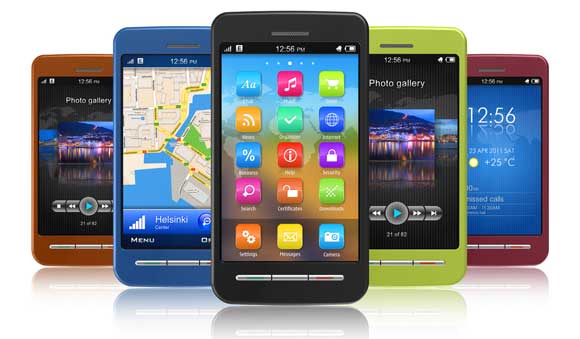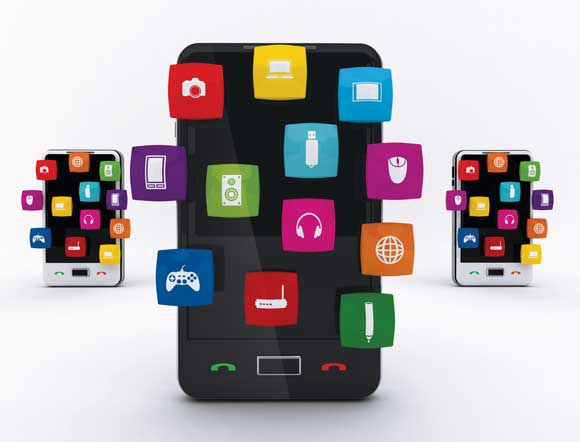Designing Websites for a Better Mobile User Experience
4Mobile phones are becoming more and more prevalent among people living in all parts of the world today. This small device has become so ubiquitous that service provider companies are vying with each other to offer the best and fastest services. It is estimated that more than two and a half billion around the world have access to mobile phones today and thousands are being added every day. Advancements made in mobile technology during the last few years have made it possible to connect to the Internet, search for information, check emails, chat with family and friends, stay connected with social media and so much more. Research has shown that 30% of mobile users browse the Internet from their phones today.

This prevalence of mobile Internet usage has necessitated designers to build websites that work well not only for the laptop and desktop browsers, but also for the mobile ones. This is because mobile browsing is only going up from here and it’s important that designers cater to the needs of this growing population. Numerous aspects have to be kept in mind while designing websites for the mobile and we have touched on some of the important ones in this article.
Related posts:
- Top Android and iOS Apps That Will Increase Your Productivity
- Tips for Designing iPhone Apps and Web Pages
- Unbeatable Android Apps for Graphics Designers
- Approach Tips to Design and Market Your Mobile App
- 30 iPad Applications You Should Have
Understand the technology
The first step in designing websites for mobile phones is to understand its underlying technology. Design for computer, tablets and mobile phones vary greatly and the W3C has set the guidelines that should be followed for designing mobile phone websites. The technology for mobile browsing is known as WAP and an understanding of its architecture is vital for the right design.
Touchscreen and non-touchscreen users
The mobile site should be designed for touchscreen as well as non-touchscreen users so that all of them can have the same excellent level of user experience. Though smartphones account for the most usage in the Western countries, there are many Asian and African countries that still deal with non-touchscreen phones. To make your site accessible to all of them, keep it simple and easy to use.
Readability
Readability in any mobile phone is fairly low because the screen size is small and downloads can take longer than a conventional computer. One way to overcome this limitation is to put the important content on top and avoid unnecessary information that does not add any value to the user. Moreover, it can be tedious to read through the contents from such a small device, therefore it’s important that the font sizes are fairly large and readable. Using smaller font sizes and font types that are not supported by the majority of mobile browsers can lead to rendering problems, and as a result the mobile customers cannot see all the hard work you have put in to give them a better mobile browsing experience.
Another aspect that you can look into is providing links to the previous pages because a lot of phones do not have the option of back buttons. This makes it difficult for the user to go back to the previous pages and this greatly decreases the user’s browsing experience. So, your site will be better appreciated if you provide links to replace the lack of back buttons.
Differing screen sizes and operating systems
One of the biggest challenges in designing mobile phone websites is the differing screen sizes, resolution, download limits and operating systems. While the three major operating systems – Apple, Windows and Android – offer a lot of support for website design, it’s a good idea to keep the coding in XML or XHTML and the character encoding at UTF-8 for uniformity and cross-platform compatibility. This provides a better viewing experience for your site across these operating systems.

Image by shutterstock
Another potential problem is the download limit. Most cell phone providers set a limit on the amount of data that can be downloaded during a given period of time and, despite the presence of 4G technology, this has not greatly changed. As a designer, this means you have to strip down the website and keep it simple so that it is downloaded quickly without consuming a lot of bandwidth. Most users will not want to visit a site that consumes a good portion of their download limit and this is why it’s important to strip down the site as much as possible without compromising on its look and feel. The ideal size of your page should be 20KB or less and it’s better to try to fit in everything you can within this limit.
Interaction
While interaction with mobile customers through the website is an important part of building a lasting relationship, there are certain limitations that come with a mobile phone. Firstly, it’s difficult to enter text in the text box of the web page. A better and easier option is to provide radio buttons and lists that users can easily select, so it’s a good idea to limit text boxes to important things, such as username and password. If you want the users to provide feedback or comment then go in for a larger text area so that it gives them the much-needed additional space for typing.
To bring more innovation into your design, you can build sites that have creative ways of input. A good example is the scanning of QR codes that have become hugely popular among users now. Instead of manually typing the information, the users can scan a QR code and the site will automatically interpret the details and provide the necessary action.
Design elements
The design elements have to be carefully chosen for mobile websites because of the limitations of download data and screen sizes. Images consume a larger bandwidth and should be kept to a minimum for better performance. Even when images are used, it is better to stick to a jpeg format.

Image by shutterstock
Other design elements like audio files and video files have no place in a mobile site. Due to the unfortunate download problems, it is best to keep away from them for now. As technology and speeds improve, they can be incorporated later. Also, only some mobile browsers support Javascript or Flash, so these are other things that should be avoided when possible. Limit scrolling to just one direction, preferably vertically, because horizontal scrolling can make it a pain for users to read through the content. Avoid the use of pop-ups, frames, tables and embedded objects in your mobile website. Another aspect you should keep in mind is the absence of a mouse for navigation. Since there is nothing to hover over with, the cool effects that can be done with different mouse functions are a clear waste of time for mobile websites.
The most dominant elements that are currently used are text, colors, a simple layout, easy to load headers and great navigation links. It’s best to use CSS for your design because it provides greater compatibility across all operating systems and browsers.
Search option
Give your users the option to find the things they want easily. Let the search box be one of the most prominent things in your page. Most likely, the visitor is coming to your page to look for something specific and they want to find it right away. This makes the search function an integral part of mobile website design.
Conclusion
Mobile phone browsing is the next wave of technological changes that is sure to transform the world in more ways than we can imagine. The increasing use of mobile phones and the fast pace of technology that is making this experience better necessitates the need to build websites that are a stripped down version of the original one without compromising on the design elements, content and attractiveness. This is one of the biggest challenges designers are facing today and a peek into the above-mentioned aspects can help you to be a part of this changing world. The mobile user is paying money to access your website through their phones, so it’s important that you give them their money’s worth!
Related posts:
- Top Android and iOS Apps That Will Increase Your Productivity
- Tips for Designing iPhone Apps and Web Pages
- Unbeatable Android Apps for Graphics Designers
- Approach Tips to Design and Market Your Mobile App
- 30 iPad Applications You Should Have





I couldn’t agree more mobile web design is most definitely one of the next big things. We have a specific team whom deal with mobile sites whom i work with quite closely and get to learn the basics. The biggest problem they face is the sheer amount of multiple platforms and resolutions to work to. Thanks for this great list i will be sure to take it all on board and adapt any of my designs i work on from now on to be more mobile friendly.
Thanks Ben, I am glade that you find the article useful 😉
The websites created for mobile are the good feature as you can open your favorite site not only in laptop or desktop but also in your mobile phone.
Very good information. Our Mobile views are increasing every month according to the analytics on all of our sites. Designing a mobile friendly sight is crucial to success of any business. Also, good point about using the QR codes as they make it easy to get people directly to wherever you want them to go. Thanks for sharing.